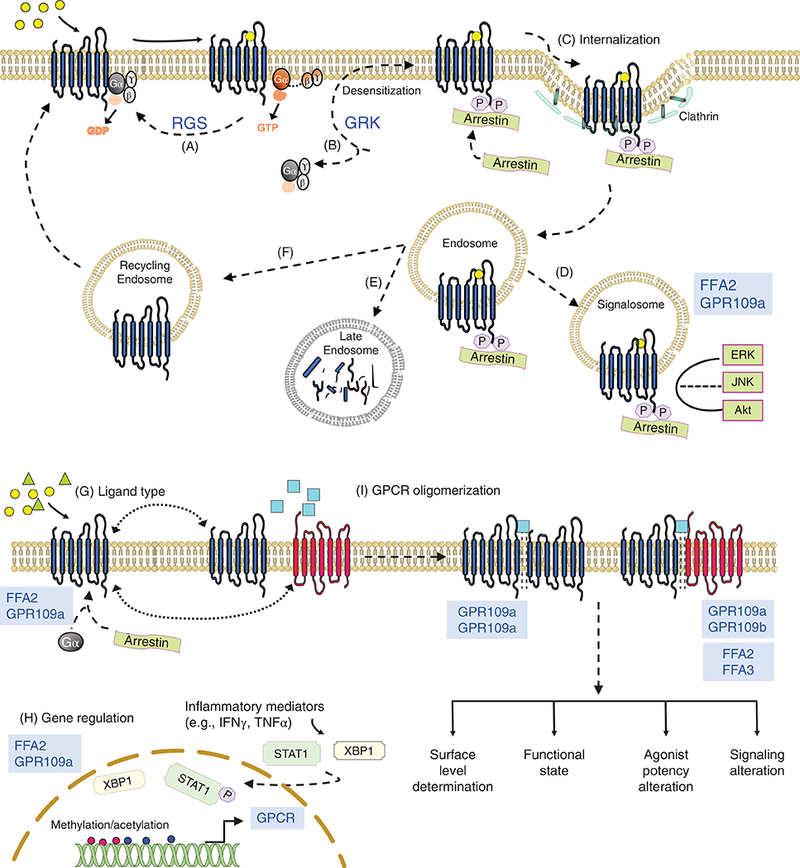Figure 2.

Regulation of GPCR signaling. Binding of agonist to the GPCR initiates a series of events: exchange of GDP for GTP on Gα subunit, dissociation of activated GTP-Gα and Gβγ dimer, stimulation of downstream effectors (depicted in Fig. 1). To prevent overstimulation and assure receptor resensitization, GPCR signaling is regulated by multiple mechanisms (few are enumerated here; see Further Reading list for detailed description). (A) Regulator of G-protein signaling (RGS) proteins function as GTPase-activating proteins, enhance the intrinsic GTP hydrolysis activity of the Gα subunit resulting in generation of inactive GDP-Gα, and promoting the reassembly G-protein heterotrimer and its reassociation with the receptor. (B) GPCR kinases (GRK) phosphorylate specific residues on the intracellular domain of agonist-occupied receptor. Phosphorylated receptor recruits β arrestin that sterically hinders interaction of the receptor with G-protein, thus uncoupling the G-protein complex from the GPCR (termed as desensitization). (C) Binding to the phosphorylated GPCR activates arrestin enabling it to perform ligand regulated scaffolding functions. Activated β arrestin interacts with the endocytic machinery (clathrin and adaptor proteins) and initiates receptor internalization. (D-F) Internalized GPCR in GPCR-β arrestin endosome can have multiple fates. GPCR-β arrestin complex can (D) direct the assembly of signalosome by allowing coupling of mitogen-activated protein kinases propagating further signaling pathways, (E) be targeted for lysosomal degradation, or (F) GPCRs can be trafficked to recycling endosomes and recycled back to the plasma membrane for resensitization. (G) Ligand type can also determine course of GPCR signaling where biased agonists can specifically activate either G-protein or β arrestin-mediated signaling pathway. (H) Gene transcription can also affect the total membrane levels of the GPCR. Transcription can be regulated by various inflammatory mediators, which can activate transcription factors that bind directly like XBP-1 on FFA2 promoter or indirectly affect chromatin accessibility by altering acetylation/methylation of the promoter (IFNγ for GPR109a). (I) GPCRs can form oligomers (homodimers or heterodimers) that can regulate (1) cell surface delivery following receptor maturation or cellular trafficking following agonist activation, and (2) receptor pharmacology and signaling. Short chain fatty acid receptors (highlighted in blue color font) are noted if data exist on their regulatory mechanisms. FFA2/3, free fatty acid receptor 2/3; GPR109a, G-protein-coupled receptor 109a (6, 8, 14, 15, 102, 112, 114, 120, 144, 179, 212).
